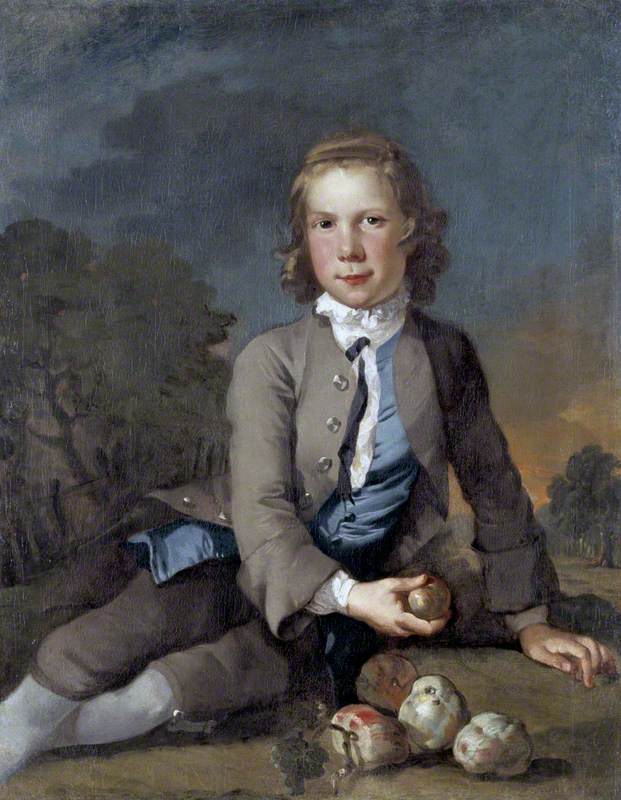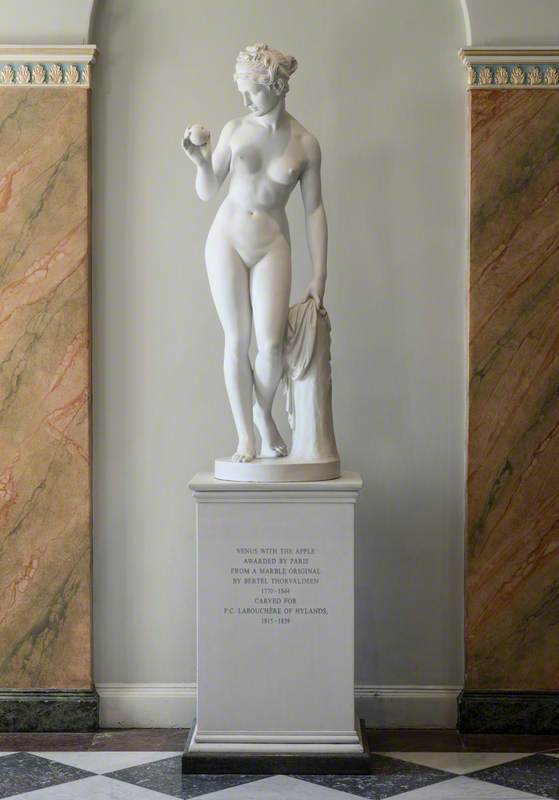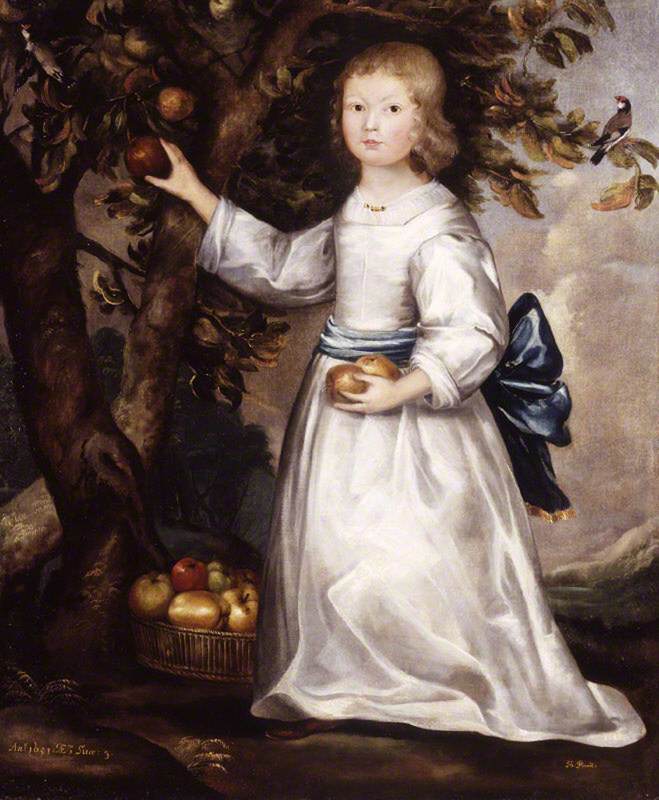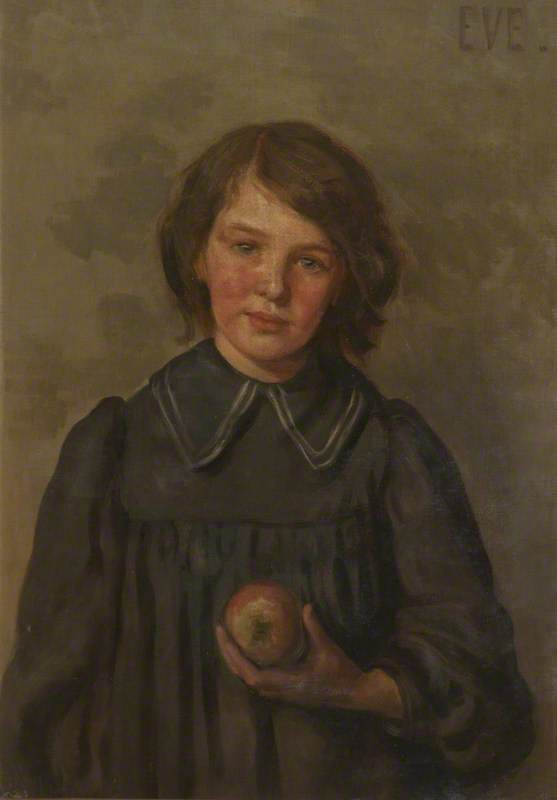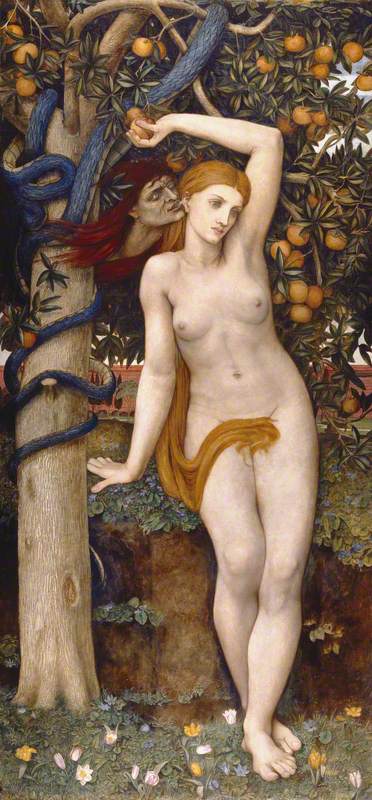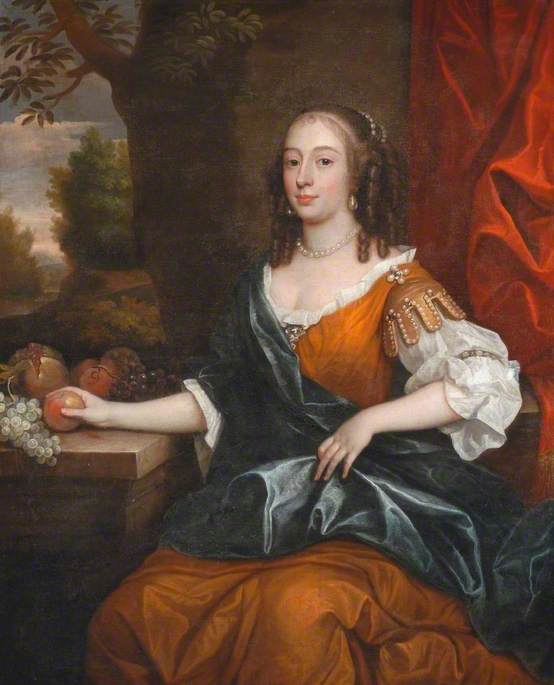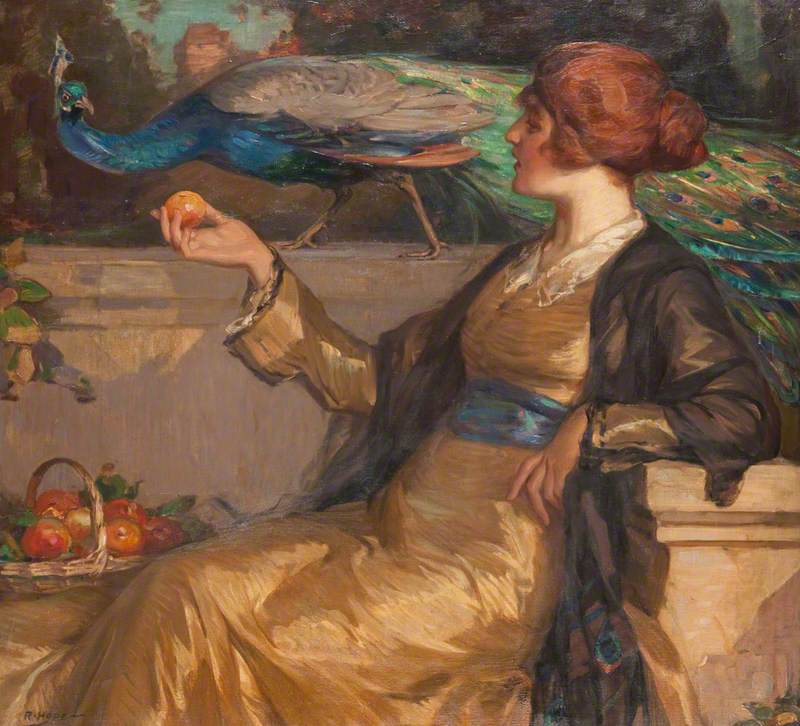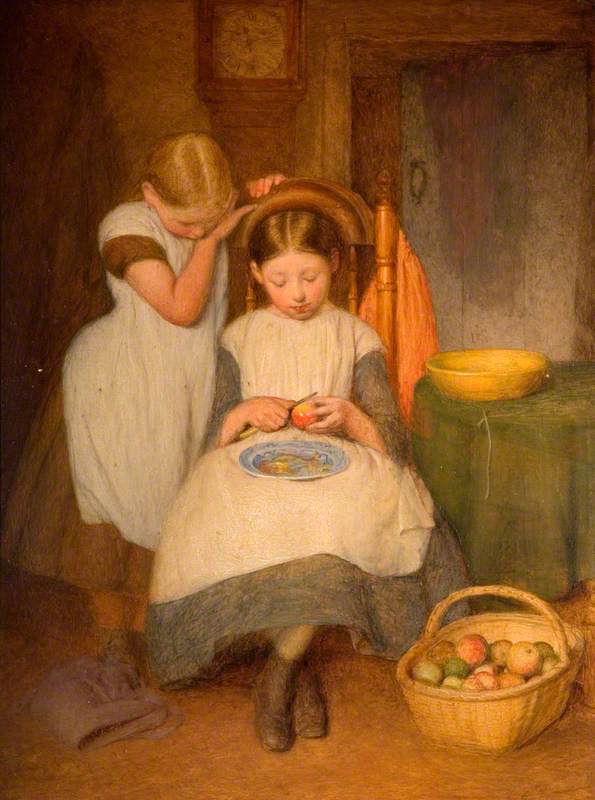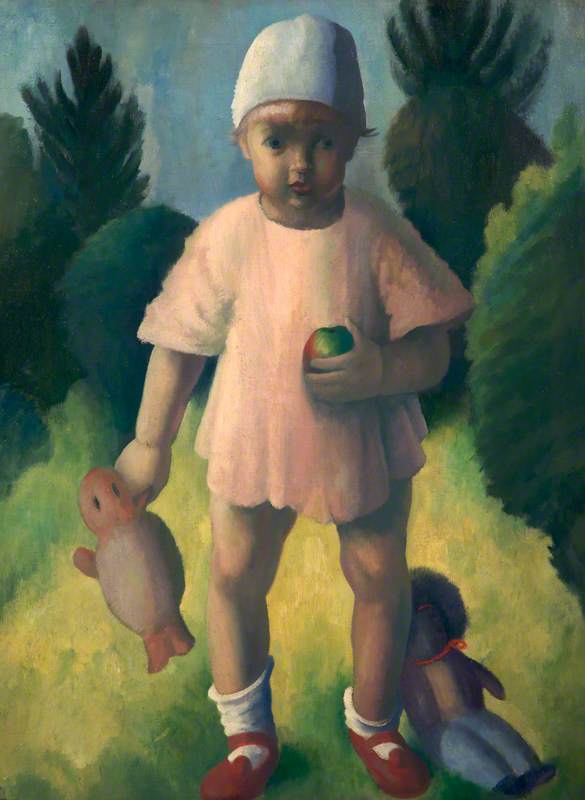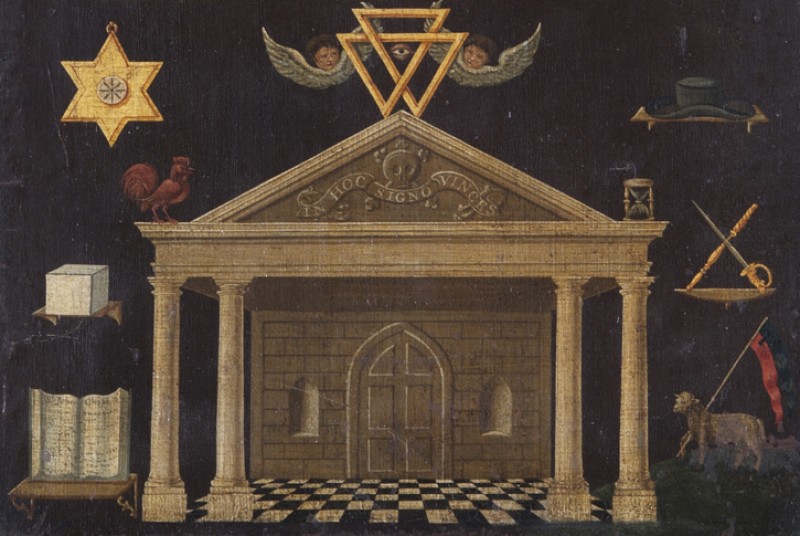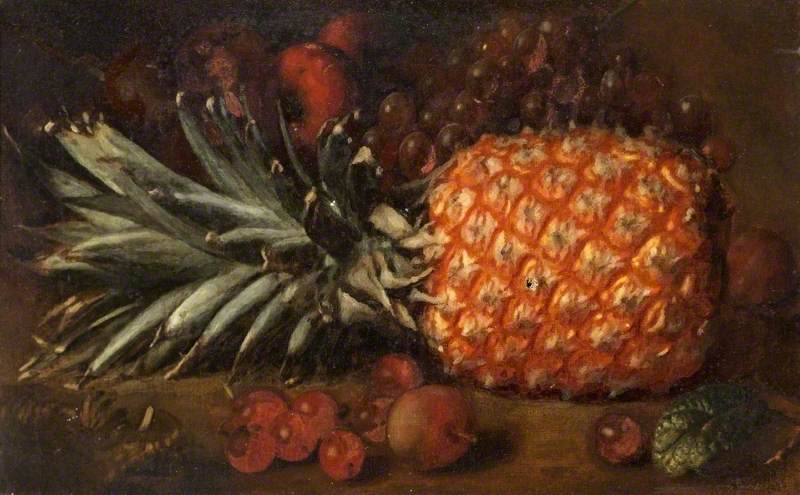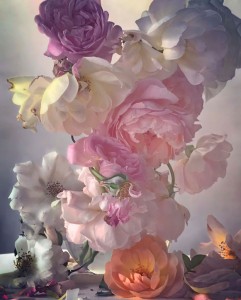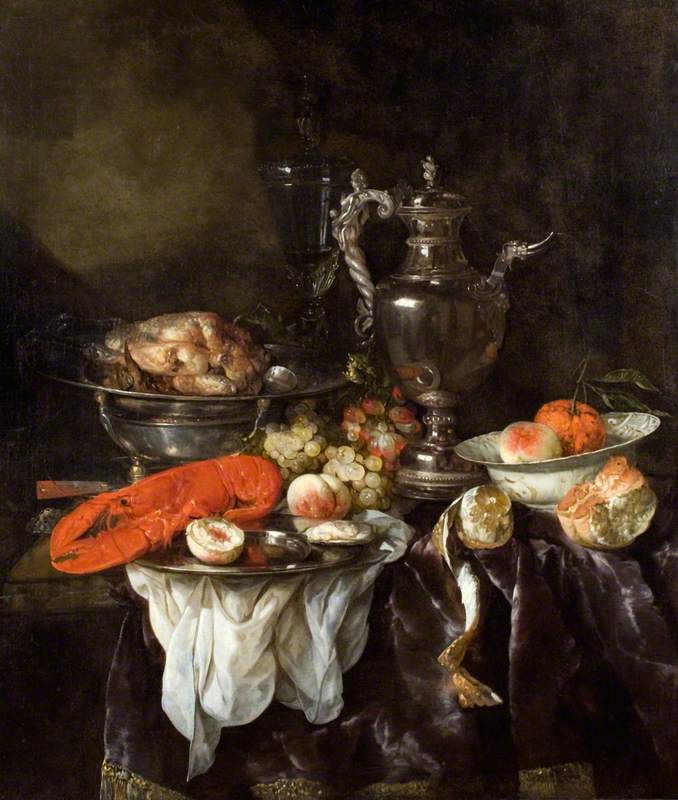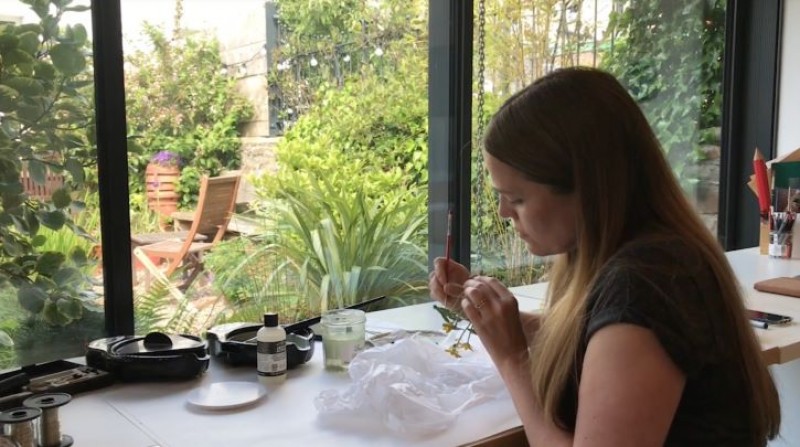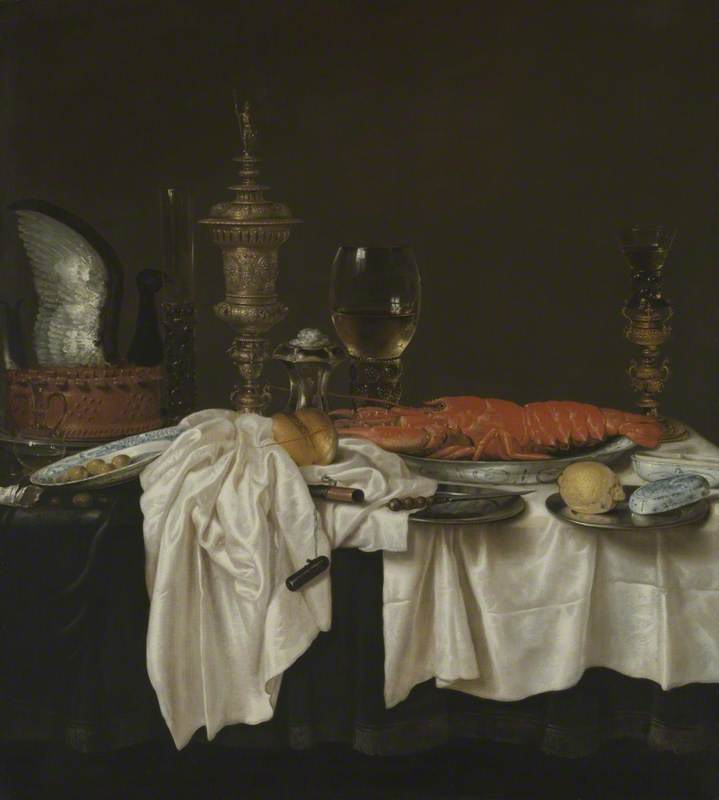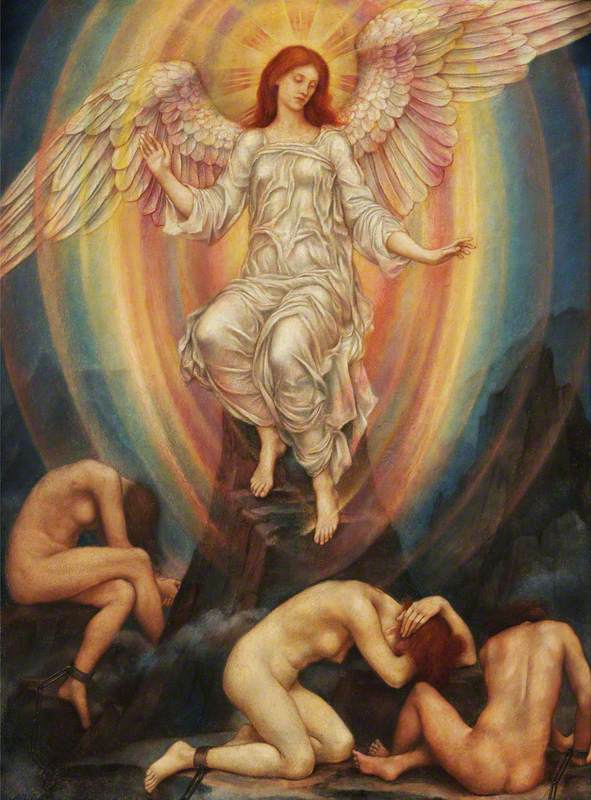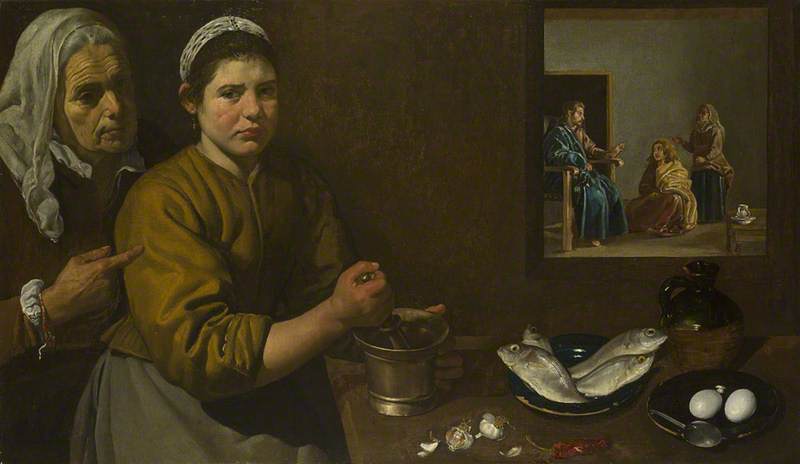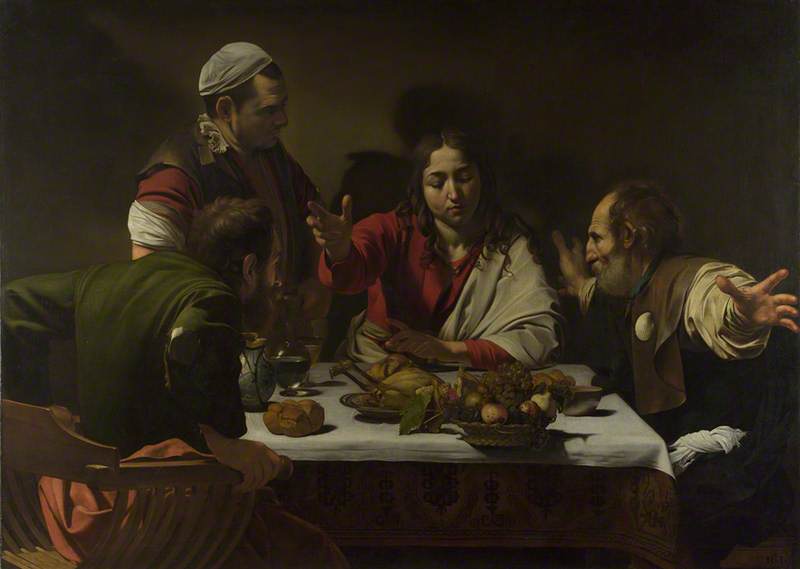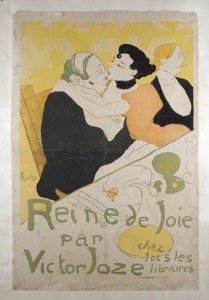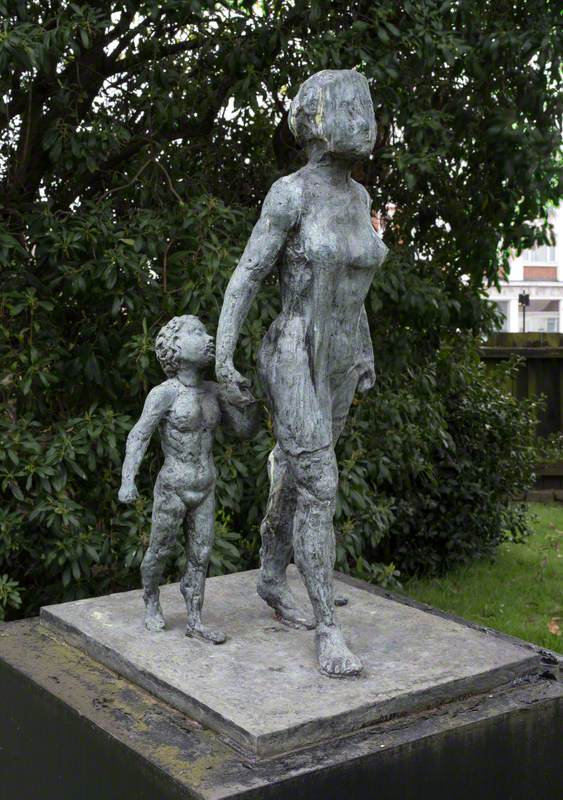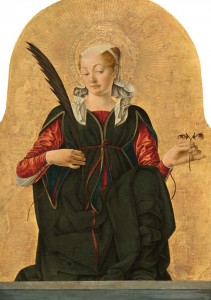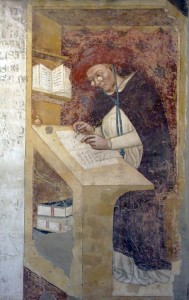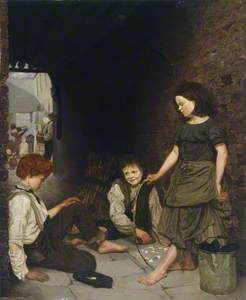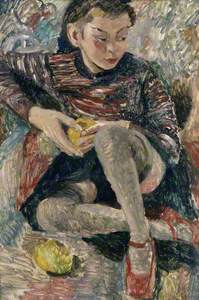The varieties of apple that are eaten around the world today have been shaped by a process of human selection over generations. And conversely, throughout time, the apple has been adopted as an artistic device to portray human emotion.
This article explores various ways that artists have depicted a person holding an apple. It is an extract from a story from the Apples & People online exhibition programme that explores the extraordinary connection between humanity and this humble fruit. Developed in Herefordshire with help from international experts and art collections, a series of illustrated short stories recount different aspects of this relationship from around the world.
The tempting apple
The apple was, of course, in the beginning – or so western European artists decided, when they chose to depict the fruit of the forbidden tree as an apple – the cause of the Biblical fall of man. Pre-Raphaelite painter John Roddam Spencer Stanhope's flowing Eve Tempted shows Eve reaching up to pluck the apple from the tree, the Satan-headed blue serpent whispering with steamy breath in her ear. The form of Eve is central to this work, seduced and seductive beneath the tree of knowledge, not even glancing up as she languidly grasps the forbidden fruit.
The sensual apple
In Ancient Greece the association of apples with Dionysus, the god of fruit and fertility, and Aphrodite, the goddess of love, encouraged newlyweds to eat an apple before entering the bridal chamber, because the fruit was thought to bring about 'fruitfulness'. The apple becomes a totem of sensual desire, as in the Bible's Song of Solomon: 'As the apple tree among the trees of the wood, so is my beloved among the sons. I sat down under his shadow with great delight, and his fruit was sweet to my taste.'
Plate (Eve giving the forbidden apple to Adam)
c.1550–1600, tin-glazed earthenware & paint, made in Urbino or the Urbino district or possibly Venice 
In this sixteenth-century plate in the Wallace Collection, the serpent is coiled around the tree of knowledge echoing the curvaceous bodies of Adam and Eve, with the circular plate neatly framing the composition around the pivotal apple. But in her left hand, Eve clutches another apple to her bosom, a possible allusion that the apple assumes sexuality because the shape of the fruit suggests a woman's breast.
In this Bowes Museum portrait, the richly dressed sitter, who may be German princess Henrietta Katherina von Oranien, rests her right hand on a stone table firmly holding an apple, her choice from the fruit on offer. In the seventeenth century, apples, grapes and pomegranates conjured thoughts of pleasure and seduction, as well as opulence. The background of a rich landscape might suggest that the fruit had been grown in the sitter's garden, as was becoming more common for the wealthy. Apples were popularly grown in hothouses in the seventeenth century, most notably at Versailles, which may have some significance in this French painting.
Basin
1485–1490, ceramic, made in Pesaro 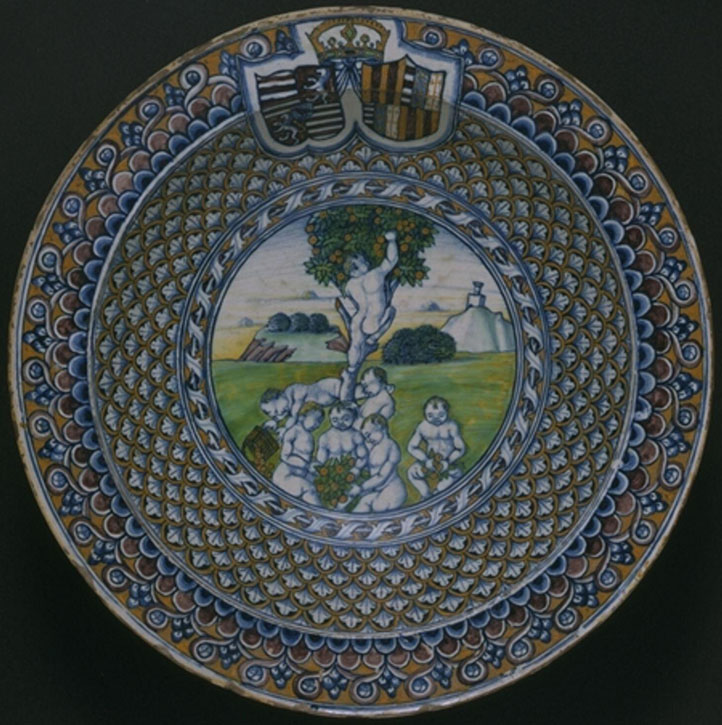
Another piece of crockery – an Italian dish in the V&A's collection – features a group of naked boys scrumping apples from a tree. It is part of the most spectacular fifteenth-century maiolica service made, in Pesaro, for Matthias Corvinus, king of Hungary and his wife Beatrix, daughter of Ferdinand I of Aragon. It is believed that this was a marriage gift from Beatrix's cousin Camilla of Aragon, ruler of Pesaro, with this dish of young boys collecting apples perhaps referring to hoped-for (but unfulfilled) fertility.
The apple beauty
At its most simple, the apple is representative of feminine beauty, beguiling the observer – which Rossetti captures in the simple sketch in coloured chalk of his muse Alexa Wilding.
Alexa Wilding Holding an Apple
1866
Dante Gabriel Rossetti (1828–1882) 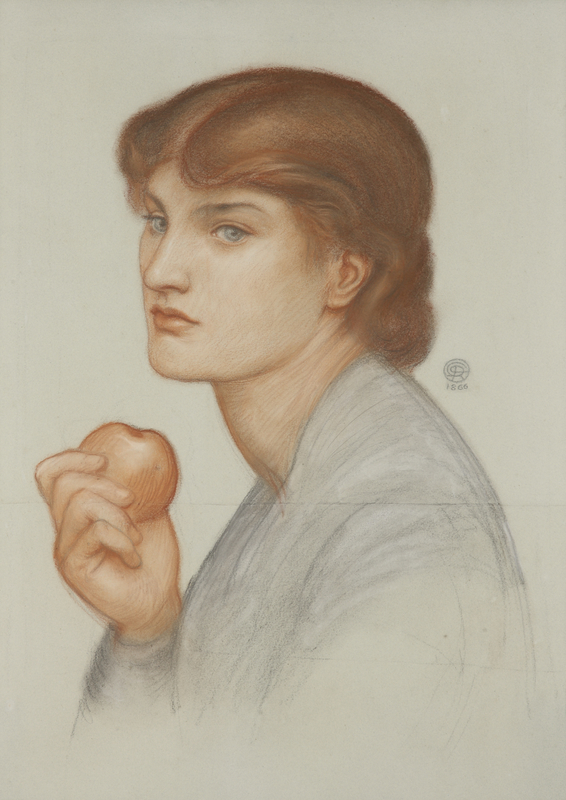
Wilding was considered to have pure, classical, beauty but, recalls Rossetti's assistant, 'sat like the sphinx waiting to be questioned'. In the sketch, the form and tones of the apple and Alexa's head complement each other and the viewer wonders whether she has any intention to bite into the apple. 'She hath the apple in her hand for thee, yet almost in her heart would hold it back,' wrote Rossetti in a poem to accompany the painting Venus Verticordia.
A more complex treatment of beauty is Robert Hope's lush, elegant and flowing painting The Golden Apple, which combines strong horizontal lines with two splendidly attired 'peacocks'. Yet it is the golden apple that is the focus of attention for the peacock, woman and viewer, selected from red and gold apples in the nearby basket and perhaps offered up to the peacock. The Scottish painter delivers a beautiful exercise in iridescent colours echoing from the woman's dress, golden with a blue sash, to the peacock.
The Golden Apple was first exhibited in the Royal Scottish Academy's Annual Exhibition in 1919. In the Serbian poem 'The Golden Apple-Tree and the Nine Peahens', which was first translated into English in 1874, peahens nightly raid the emperor's apples from his tree, but one transforms into the most beautiful maiden who makes a bargain with the emperor's son to save an apple. Peacocks are also the sacred bird of Hera, Queen of the Gods and protector of women.
The loyal apple
James Stuart (1612–1655), Earl of Darnley
Anthony van Dyck (1599–1641) (after) 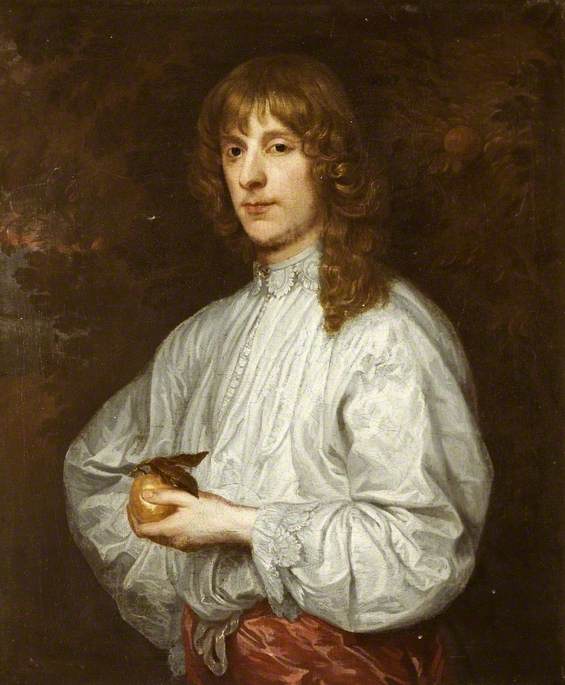
In this portrait of Charles I's third cousin, James Stuart Earl of Darnley is also thought to be holding the golden apple. Here it is a symbol of loyalty, with Darnley perhaps depicted as the Greek shepherd Paris who must decide the fairest goddess and through his choice sparked the Trojan War. Darnley's golden locks echo the golden apple, picked from the tree behind him, and together reinforce a diagonal axis to this painting. This is one of several versions of this painting, including one in the Louvre in Paris.
Whilst the leafy fruit is recorded as an apple, it must be said that it does appear somewhat pear-like, and has also been referenced as a quince, lemon and orange.
Darnley indeed proved to be a loyal supporter of Charles I. Later created Duke of Richmond, he negotiated with Parliament on the King's behalf during the English Civil War and was one of the few noblemen to attend the executed King's funeral.
The sorting apple
Apples also feature as an expression of human decision-making, perhaps most often as the golden apple of Greek mythology. Here Anthony van Dyck again takes the subject of the shepherd Paris, this time as a sensitive self-portrait. His right hand surreptitiously holds the golden apple of discord as he visibly deliberates before awarding the apple to the most beautiful of the three goddesses.
The nurturing apple
Apples, the everyday fruit, can represent the care and protection of a growing child. This metaphor has produced some charming portraits of young children, particularly by seventeenth-century European painters.
Caesar van Everdingen's painting shows a Dutch boy's christening, resplendent with the sash and baptismal medal, and with doves in the background. He has taken a bite from the apple, indicating the partaking of knowledge, and the finch on his left hand, an easy bird to train, also alludes to education. This painting suggests that careful nurturing yields the best fruit.
Edward Davis was an accomplished painter of domestic interiors that often involve childhood instruction. In Preparing for Dinner, by casting most of the picture in shadow, attention is focused upon the two girls, underlining the importance of teaching children to love and respect their elders, and to be useful and obedient.
The apple of redemption
Coming full circle, the apple also represents overcoming original sin as well as the original temptation. With Mary as the new Eve, Jesus is the new Adam who takes away the sins of the world by allowing himself to be nailed to the cross to atone for the sins of Adam.
The Madonna and Child with Two Music-Making Angels
c.1500
Gerard David (c.1460–1523) 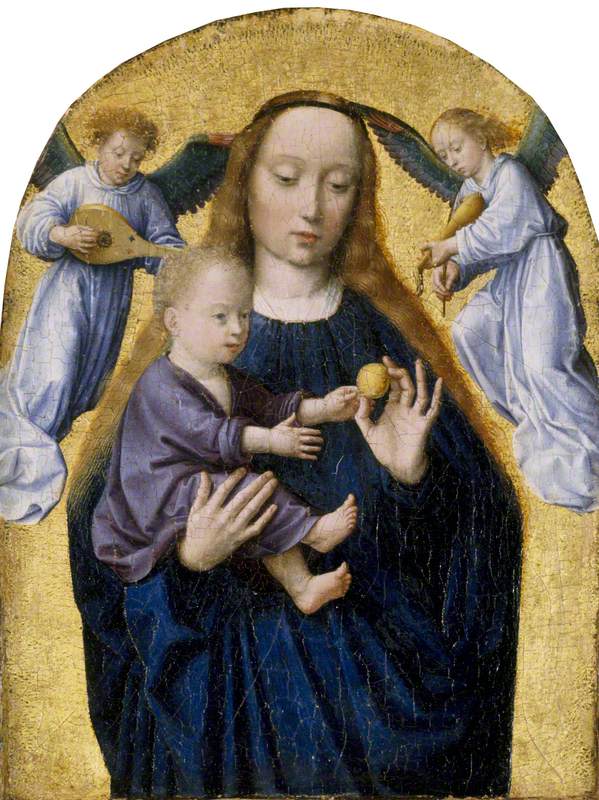
Christ reaching for the apple symbolises the redemption of the world in this painting by a master of Bruges. David's skill was bringing humanity to the traditional iconography of Jesus and the Virgin Mary.
An apple for everyone
People from all walks of life hold the apple. In this dour painting by Manchester-born Thomas Armstrong, slum children play with stones in a dark back alley. A girl holds a hoop in one hand and an apple in her other.
A less disadvantaged – though somewhat forlorn – toddler, holds tightly onto his apple amongst his toys, in this painting by the troubled Ukrainian-born British post-impressionist Bernard Meninsky.
We'll end with a fine small painting in the Royal Collection, courtesy of His Majesty King Charles III. Here is Elisabeth, one of 15 children of Charles II, Archduke of Austria. She is painted at the tender age of one year and five months, resting her left hand on an orb-like apple. It is not clear precisely what the significance of this pose was, but in German the royal orb is called Der Reichsapfel. Elizabeth died at eight years of age.
In the humble apple dwells temptation, sensuality and beauty, as well as loyalty, nurturing and redemption. Art history shows the inextricable link between the apple and people.
Dr David Marshall and Hugh Fowler Wright, Apples & People
A version of this story was published on the Apples & People website: a partnership between the Brightspace Foundation, the Museum of Cider and the National Trust in Herefordshire. The project includes two physical exhibitions of apple art:
- 'An Apple Gathering' at National Trust, Croft Castle in Herefordshire is open until 5th November 2023
- 'A Variety of Cultures' at the Museum of Cider in Hereford is open from 27th October 2023 to 28th January 2024
